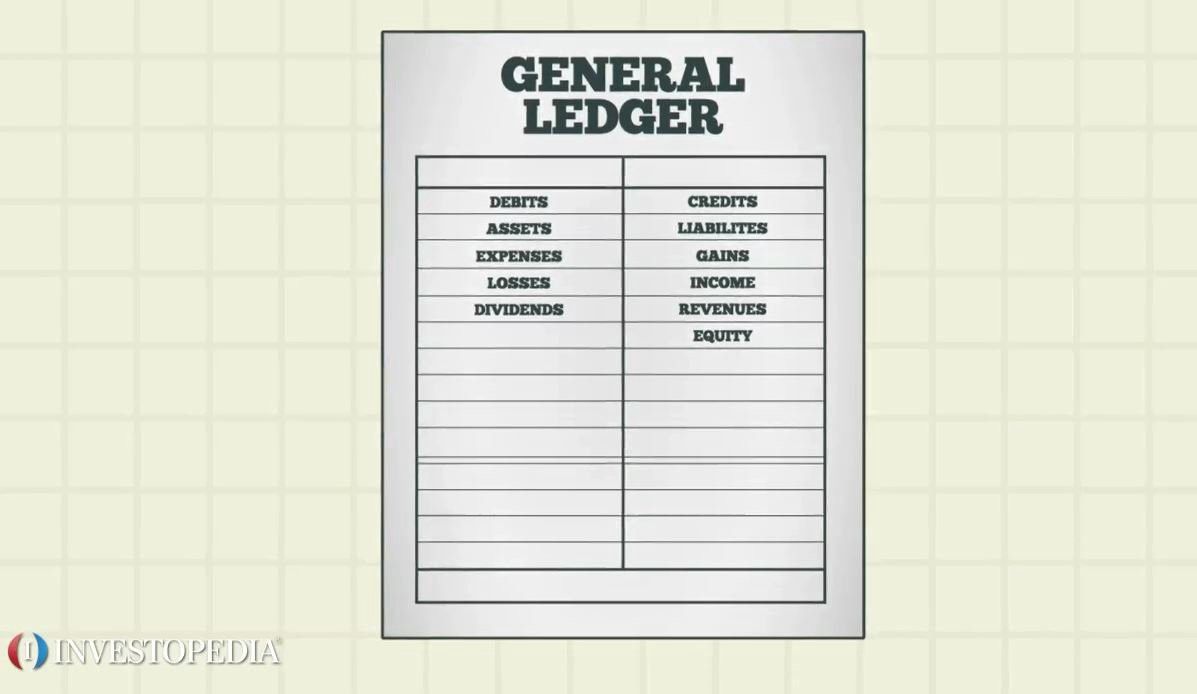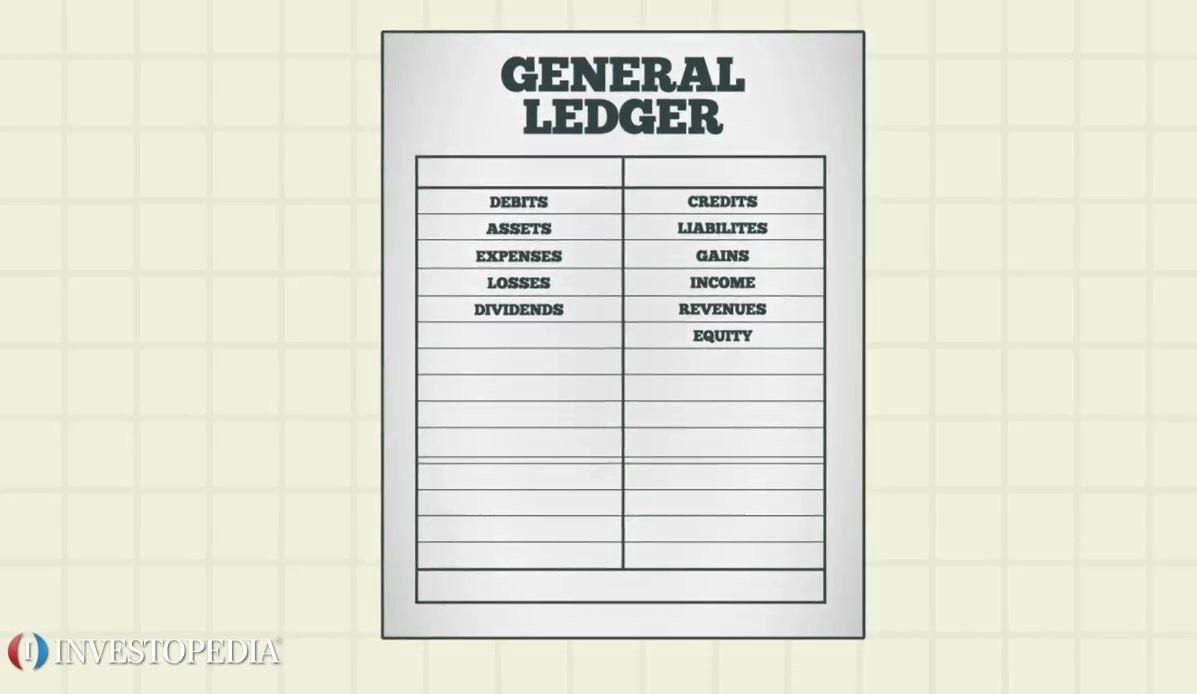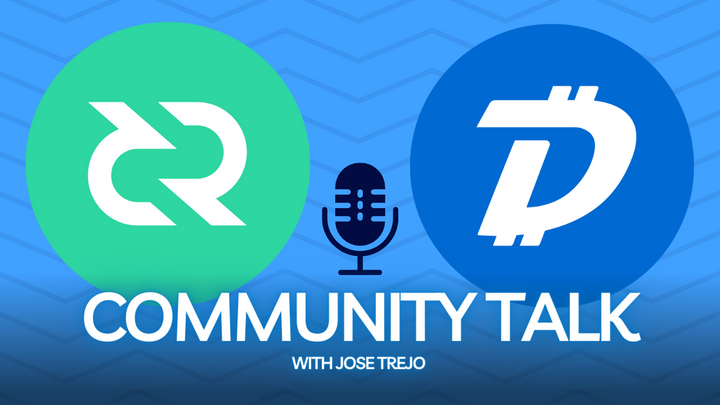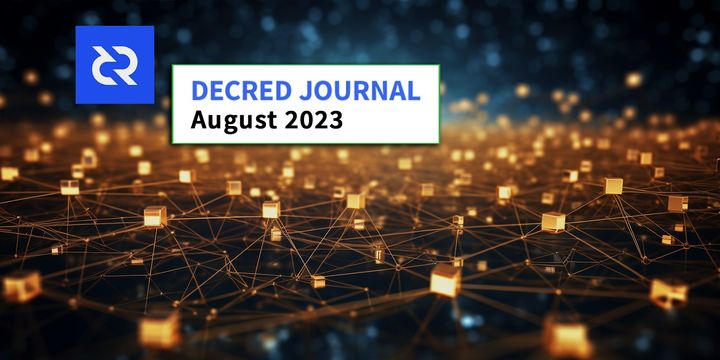Assurances in Crypto
As someone who is an accountant by training and previously slaved away in Big 4 audit, I’m particularly conscious of the role of assurance in our financial lives.

By Permabull Nino - Oct 3, 2018

A Breakdown of BTC, DCR, & Everything Else
What Do You Mean Assurance? Why Is It Important?
Assurance is a topic that is generally overlooked within the cryptocurrency space. However, it’s something that has been key to the idea of money since the emergence of the first accounting ledgers and today is prevalent within the modern financial world. As someone who is an accountant by training and previously slaved away in Big 4 audit, I’m particularly conscious of the role of assurance in our financial lives.
During my time as an auditor, a manager on a project that I worked on once told me “Wall Street is depending on you!”. As a low level staff auditor, I recall walking out of the office later that evening laughing at the comment not thinking much of its substance/message. Despite my smug reaction, this overly excited fellow auditor had a point — people were depending on the auditors to provide a reasonable level of assurance that the company’s annual financial statements were accurately stated, and done so in accordance with Generally Accepted Accounting Principles (GAAP). Would you buy a stock that received a questionable audit opinion surrounding the presentation of their financial statements? I sure know I wouldn’t!
Assurance isn’t unique to stocks — it’s a big part of lending (credit scores), early stage investing (founder track record), and ultimately the money we keep in our bank account/wallet. Fiat monies and the levels of assurance they provide are effectively a function of the jurisdiction that rules over/issues each respective one. Have an asshole dictator? Dump it. Your country is in a recession and resorting to money printing to save the day? Dump it!
Society needs assurance in whichever capacity it can be provided for these different money-related situations because people need some sort of way to plan for the future, and discount according to risks that are present in certain financial situations. Which begs the question, what kind of assurances are we looking for in a cryptocurrency, so we ourselves can plan for the future? There are 2 general assurances that need to be provided by a cryptocurrency in order to better plan for the future:
- Money Assurances
- Ledger Assurances
Cryptocurrencies are unique in that the money cannot be separated from the ledger, but are still at the same time distinguishable from one another. An easy way to look at this is:
- bitcoin = the value communicated on the blockchain
- Bitcoin = the P2P network, with blockchain as final product of proof it works
In the 2 proceeding sections we’ll dive into more detail on each set of crypto-assurance at a high level using Bitcoin as an example, before getting more in the weeds about how this applies to Altcoins, and specifically Decred’s unique position in assurances it provides.
Money Assurances: Social
Money is the ultimate social contract — it’s one of the few things that humans almost unanimously agree both exists and matters. Under the right conditions, an exchange of money for product/service is the greatest form of unspoken agreement we have. This “unspoken agreement” is built around a certain set of assurances that are particular to the social/less technical aspects of money. In order of importance, the social aspects that surround crypto Money Assurances are:
- Monetary Policy: Keep in mind that monetary policy alone doesn’t suffice, rather the plausibility of the monetary policy is what matters most. Belief in any crypto monetary policy can only be justified with consistency over a prolonged period of time, and Bitcoin frankly is the only coin that has thus far proven it has a rock solid monetary policy. The community obsesses over the hard limit on the money supply, and run their army of full nodes to protect this version of Bitcoin. With a predictable monetary policy you have assurance to plan around your wealth remaining x/21 million coins.
- Liquidity: Can your coins be exchanged for something today, and in the future? Liquidity and ability to exchange your money for products, services, or other forms of money in a friction-minimized manner is crucial. Basically, this hits on the basic question of — do other people accept your coin as money, and worthy of accepting in an exchange? Brendan Bernstein covered this pretty well in a post — you’re better off rallying around the majority opinion when it comes to money instead of being contrarian. Liquidity will beget more liquidity, and will ultimately provide more assurance for futures sales of your money. Once again — Bitcoin dominates in this realm as the UOA of the entire crypto-to-crypto market, and is likewise on the verge of infiltrating the traditional financial world.
- Features: Privacy, Smart Contracts, etc. are all examples of the things that can be added on top of a cryptocurrency. However, it is my opinion that these things are secondary to the primary function of money — which is provide a store of value that can be reliably maintain purchasing power over an extended period of time, and that will be accepted by the largest group of marketplace participants possible. Marginally better privacy or smart contract capabilities doesn’t excuse a non competitive monetary policy nor lesser network effects in terms of a coin’s ability to be exchanged within the global marketplace. Bitcoin doesn’t dominate in this department, and this *arguably* shows that this point provides very little in terms of Money Assurances that are necessary for a cryptocurrency to survive over the long haul.
Ledger Assurances: Technical
Money Assurances certainly play their part, but the Ledger Assurances are where the majority of our real discussion begins. With this in mind — the importance of reaching a common output cannot be understated, as your coins (Money Assurance) are only as valuable as the chain that they belong to (Ledger Assurance). Miners, nodes, and all other stakeholders within a crypto network all are servants to a single cause, which is establishing the true and common ledger. Each node stores their own version of the truth, but their version is arguably less plausible/valuable if it is out of wack with the objective network majority. If a public company reported their financials using their own set of accounting standards that nobody acknowledged, the rest of the financial world would have trouble attributing any value to their presented financial statements. This effect is magnitudes larger within cryptocurrencies as the money and the ledger that records their storage are inseparable. In the crypto space people call the mechanism used for reaching the common output consensus. Before moving forward, I want to make this point as explicit as possible:
Consensus is a form of automated governance that populates and publishes ledger entries every x period. The “blockchain” is proof that this automated governance structure actually works as designed, providing near ABSOLUTE assurance over the integrity of the ledger data.
You read that correctly — the ledger assurance model invented by Satoshi is capable of providing absolute assurance when executed under the correct conditions. Providing absolute assurance is unreal, especially at the speed which Bitcoin is able to provide this (~ every 10 minutes). Now, key considerations for Ledger Assurances include:
- Falsification of entries/fraud/rewriting the ledger -51% attack risk
- Am I looking at the right ledger? — Fork Risk
- Valuation — does the “value” of my entries change depending on the ledger they sit on? — Fork risk
I’m not going to do a deep dive into these different ledger assurance pillars/attack vectors, because there’s more technical people who are capable of explaining them better than I. However, what needs to be taken away from the 3 items above is these are the things that can get in the way of our ultimate goal of absolute assurance.
How Money & Ledger Assurances Impact Each Other
The end goal is to have a cryptocurrency that scores very high in both the Money Assurances and Ledger Assurances category. We just need to quickly acknowledge how each set of assurances can impact its counterpart. If you intuitively understand this already, skip to next section. For all cryptocurrencies, including Bitcoin today, the cycle works *basically* like this:
- Speculate
- Price Goes Up
- Difficulty Stays the Same, Mining Becomes More Profitable
- More Hashpower Comes Online, Making Ledger More Secure
- People Make Money, Resulting in Larger Infrastructure Investment (nodes, liquidity onramps, etc.)
- More Hashpower and Infrastructure Brings More Assurance, Leaving More Confidence for Speculation
- And this cycle goes on and on…
Bitcoin’s Assurance Journey
Most take Bitcoin’s crypto-hegemony for granted in 2018. Here’s a thought that might be slightly controversial: Bitcoin hasn’t had strong Money & Ledger Assurances for a very long time, and by that I mean for a year at most. Before freaking out — relative to the rest of crypto, it’s had high Money & Ledger Assurances since the invention of the first shitcoin. However, in terms of being a suitable cryptocurrency that provides sufficient assurance where it matters for the average investor (Money & Ledger), that history is very short. This begs the question: which form of assurance sprouted first and led the charge? And why does this question matter?
The question presented above matters for the simple reason that an alternative coin that provides a unique set of assurances could use the Bitcoin bootstrapping model to launch itself into orbit. Now for the answer to the question: Bitcoin Ledger Assurances preceded Money Assurances. In the first email Satoshi sent presenting Bitcoin to the cypherpunk email listserv, there wasn’t a single mention of the monetary policy — the focus was on the tech and set of parameters used to leverage creating something that could provide near absolute assurance where zero assurances previously existed in the absence of a third party. The novelty of this invention and ledger assurance model ultimately attracted cypherpunks, libertarians, and other tech-savvy misfits. Over a short period of time, these early adopters of Satoshi’s new ledger assurance tech started speculatively holding bitcoins, which was the early stage spawning of Bitcoin’s Money Assurances we have today.
See Satoshi’s first Bitcoin email
Argument: No Coin That Copies Bitcoin’s Ledger Assurance Model Can Overcome Bitcoin’s Money Assurances
99.9% of cryptocurrencies have copied Bitcoin’s Ledger Assurance model, and it almost goes without saying that they all are huge laggards in terms of Money Assurances. As we discussed before — Bitcoin bootstrapped Money Assurances from novel Ledger Assurances. If an altcoin has effectively copy + pasted Bitcoin’s Ledger Assurance model, and is executing the assurance model more poorly (lower hashrate, nodes, etc.), then why should I be holding it? I want my money to be sitting in places that provide the most assurance over a long time horizon. Diversification is a poor argument, because diversification for the sake of it is completely moronic. The only altcoin(s) you should be holding in your portfolio are the ones that can fulfill the Ledger Assurance pillars mentioned earlier in a unique and arguably more effective/efficient fashion than Bitcoin. If your answer to the question “Does this altcoin possibly provide a higher probability of absolute Ledger Assurance than Bitcoin?” is yes, then it might be worth speculatively holding today. It is for this very reason that I expect 99.9% of altcoins that exist today to accrue very little value relative to Bitcoin over a long time horizon. All these coins provide worse Money Assurance, and lack substantial innovation/improvement in terms of Ledger Assurance to ever compensate/catch-up in the Money Assurance game.
Hot Take: Ledger Assurances Need Differentiation From Bitcoin to Survive
You’re probably wondering “How can a coin possibly innovate from Bitcoin’s Ledger Assurance model?”. It’s a good question, so now we’ll list out the different pieces that fit together to create the beast known as Bitcoin-Grade Ledger Assurance:
- Loose Structure: P2P, flat automated governance, free to fork blockchain (a form of exiting)
- Expensive to Attack: Proof of Work, effort and expertise required to set up mining
- Hard Security Limit: People will only mine as long as it is profitable over a long period of time
- Rules Based: Cheap for nodes to reject invalid items, strict rules is key to providing absolute assurance
All of these pieces mesh together to form what most know today as the ultimate ledger assurance machine. Bitcoin dominates when it comes to using this model, and if you’re not convinced go look at Coinmarketcap to check out which coin is listed at the top. The first mover advantage Bitcoin has from being the first to use this model makes it almost impossible to overcome for a copycat altcoin, especially when the ledger assurances are reinforced from the positive feedback loop from the complementary Bitcoin money assurances that are growing by the second. Altcoins need to explore new forms of Ledger Assurance that are useful and effective at providing our goal of absolute assurance if they want to have a seat at the crypto-money table when this all shakes out.
Enter Decred: A New Ledger Assurance Model
Decred came up with an incredible crypto-invention, which has somehow gone completely overlooked by the market at large: hybird POW/POS. In this hybrid model, POW miners present blocks and POS allocates 3 “votes” at a minimum and 5 as a maximum to determine the validity of a block. If a block receives less than 3 votes, the miner forfeits their complete mining reward, the block is rejected, and the transactions within the block are rebroadcast to the network so they can find a home within a new block. If you want to see the POW/POS interacting in an environment where they are at odds you should check out Matheus Degiovani’s Ticket Selection Code Review . Furthermore, if you want a hypothetical play by play in written word there’s a great explanation by Dave Collins on Reddit .
It’s incredible how big of a deal adding POS to the mix is — it creates what we will now refer to as Decred-Grade Ledger Assurance, which consists of these items:
- Fixed Structure: P2P, flat automated governance, expensive to minority fork (exiting = difficult, if not impossible)
- Very Expensive to Attack: POW (expensive, requires expertise) + POS (easy access & set up costs are minimal)`
- Higher Security Upper Limit: People will only mine as long as it’s profitable, but people can stake without cost
- Rules Based: Cheap for nodes to reject invalid items, POW having to pass through POS makes ruleset even stricter to append to ledger than even Bitcoin
Earlier on we touched on how Ledger Assurance needs to cover for (1) fraud, (2) ledger selection risk, and (3) valuation risk — which is dependent on #’s 1 & 2. Below let’s run through these points and discuss how Decred breaks the Bitcoin mold for uniquely covering these risks.
(1) Fraud/False Entries/Rewriting Ledger
- Fraud in double entry accounting leaves an audit trail for identifying mistakes and subsequently analyzing the nature of the mistakes to determine intent. With cryptocurrencies, outside of buggy code, there are pretty much no honest mistakes — malintent is implied at first signs of trouble. That’s why they call these ledger assurance models trustless after all, you don’t need to trust anyone as long as they play within the explicitly stated ruleset. With this in mind, there are a multitude of ways you can try to commit fraud and get away with publishing these entries in a crypto ledger. However, for purposes of our discussion we’re going to focus on the most widely discussed attack: the 51% attack. There are two facets of a 51% attack that we need to go over: (1) the raw cost of attacking the chain and (2) the profitability of launching such an attack.
- Raw cost of attack: Figuring out which coin is the most costly to attack doesn’t require much research, it’s Bitcoin. The cost of attacking Bitcoin is the sum of the hardware and operational costs (electricity) to overwhelm the honest hashing power on the network. How do you convince people to join the side of the honest hash power in crypto? Easy — profit. Auditors wouldn’t accept a client’s proposal for an annual audit if it wasn’t going to be profitable under most circumstances, and same goes for the Bitcoin blockchain auditors — Bitcoin’s security as it relates to hashing power only scales upwards as far as it selfishly benefits miners to do so. Decred’s mining suffers from the same exact issue, and so does every other POW based cryptocurrency. However, Decred’s security isn’t only guaranteed by mining, it also has staking. What’s very interesting about the POW/POS blend is that it takes the biggest knock against a pure POS system, the “nothing at stake” problem, and leverages this to provide a first-in-class ledger security upgrade, with POW as the backbone. POS security can keep piling on until people find it unattractive, because there’s no upfront cost (hardware, electricity) keeping it in check. Long haul this provides Decred with a higher absolute limit for cost to attack than all cryptocurrencies, including Bitcoin.
- Profitability of attack: Earlier this year I was reading Zubair Zia’s series of articles “Apples to apples, Decred is 20x more expensive to attack than Bitcoin” and something stood out to me — the profit margin for a successful Decred attack is much smaller than every other cryptocurrency. See this table below from Zubair’s follow up article “Decred’s hybrid protocol, a superior deterrent to majority attacks”.
- This article was written July 4, when the Bitcoin market capitalization was ~$110B, with approximately $109B in profits on the table for a successful attack. On July 4 Decred’s market capitalization was ~$496MM, with a remaining $323MM in profits. A quick calculation has us at 99% profit margin on a Bitcoin attack, and 65% profit margin for a fully successful Decred attack.
- Now — before anyone starts screaming at their computer, I understand that these calculations are overly simplistic and do not paint a full picture of how a 51% attack works. I understand that these attacks are double spends, so as long as the cost to attack is higher than the revenue from the double spend (which obviously is < entire coin supply) the attack isn’t worthwhile. So yes I admit, this calculation paints an unrealistically crappy picture of Bitcoin’s 51% ledger security. However, the point still stands — Decred profit margins on an attack are still thinner than they are on Bitcoin, as there is more security per dollar value stored within its ledger. With a lower incentive to attack, we have a marginal improvement in our possibilities of maintaining absolute assurance using Decred.
(2) Ledger Selection Risk
- Decred being resistant to minority forks covers two separate concerns of ours as they relate to Ledger Assurance: (1) are we looking at the correct ledger/are we all coming to the same conclusion and (2) what happens/can happen to the value of our money when ledger forks happen. Point #2 here will be addressed in the valuation section that follows. Point #1 could be moreso considered a tradeoff instead of an outright improvement in terms of how Decred as a crypto-money functions. The easiest way to approach this is through the Bitcoin fork drama from summer 2017 — there was an outright battle royale between community members to determine which Bitcoin was the “real Bitcoin”. Most had a feeling which Bitcoin was the real one, but there was enough uncertainty floating around to spook a lot of people. As a Bitcoin holder I was admittedly nervous during this time myself. So in this situation, Decred could have *possibly* shined — minority chains cannot survive without swallowing a substantial amount of money, and more likely that not, eventually failing. Keep in mind this is a big deal, and huge difference from Bitcoin, where “the forking business” proved insanely profitable for a lot of people. A profitable forking business provides incentive to attack through this vector, and I’d be willing to bet we haven’t seen the last of these contentious forks. With this in mind — there never would have been a conversation about “what is the real Decred?” in this adversarial environment, thus providing us with assurance that we were in line with the majority/one and true Decred ledger. For purposes of absolute assurance, this would be a huge strength of Decred’s model. Even in the most questionable community environments, Decred still spits out a single, indisputable ledger. Bitcoiners would argue that the Bitcoin loose governance model is what ultimately saved Bitcoin, and I admittedly don’t have a good rebuttal. As I’ve hinted at before — I believe both ledger assurance models have their place, and in this particular case it’s not completely obvious which would have been the ideal one. However — from a purely accounting perspective, Decred provides stakeholders with more assurance about “What can I expect to happen to this ledger? Is there profit in trying to change the rules?”.
(3) Valuation Risk
- Eliminating ledger dispute resolution protects Decred holders from their chief concern: “their version” of a crypto-money losing value. What’s important to acknowledge here is that the risk is what’s most important, not the eventual outcome. It turns out that the Bitcoin forks turned into a relatively positive outcome in terms of price, but keep in mind before then there was substantial amount of risk/uncertainty about what this meant for the Bitcoin price and even network fundamentals moving forward. Some people are comfortable with a certain level of exposure to valuation risk as a result of a fork, but you are in straight up denial if you can’t understand that some people would like to avoid this risk completely. As far as I’m aware, Decred is the only coin that provides assurances in this category.
Extra note: Remember the Bitcoin forks occurred in a bull market. I’d be curious to see what the Bitcoin Cash effect would’ve been had it occurred in the thick of the 2018 bear market.
Conclusion
Decred’s ledger assurance model in certain respects is an improvement on Bitcoin’s, and is a matter of tradeoffs in other respects. These differences in tradeoffs might be what ultimately determines one or the other becoming a better form of crypto-money over the long haul. However — as you’ve seen in the previous section, Decred is on the path of bootstrapping the same way Bitcoin once did: by creating an innovative, powerful Ledger Assurance model, and subsequently budding Money Assurances off of the strong ledger base.
A loose, anarchic Ledger Assurance model might be what better serves as money for the decentralized internet era, but if I was looking for something to bet on in terms of providing ABSOLUTE ASSURANCE for a crypto-ledger, Decred would be my pick. For me this is worth speculating on, as I believe that innovative, provably functional ledger assurance models are the only way to create entrenched Money Assurances over the passing of the years.
Disclosure: Author holds Bitcoin and Decred. This is not financial advice!
I welcome constructive criticism on thoughts shared within, just hit me up on Twitter
Permabull Nino (@ImacallyouJawdy)





Comments ()